|
The Evolution of Canine Social Behavior

A surprising book, dismissing common believes and assumptions, and leaving the reader with simple sound explanations. A book for all students of animal behavior wishing to uncover the whys and hows of canine social behavior. ‘The idea of dominance-aggression is biased. It is possible to be aggressive and dominant, but the term suggests the dog attacks because it is dominant. No dog attacks because of dominance. Dominance aims at controlling another by means of ritualized behavior, without harming or injuring it. The final attack if there is one is motivated by aggression alone. Saying that a dog is a fear-biter is equivalent to saying that the dog does not behave purposefully. By saying that the dog shows submissive-aggression we simultaneously answer the question of how to solve the problem. The dog is submissive, which means reacting to a threat by another, giving in, and surrendering. It only becomes aggressive because its behavior does not have the desired effect. The dog is then under threat and ready to react by flight or immobility. If flight is not possible, it may freeze. Some do and die. Others resort to their last defense, they attack, and then the drive of aggression takes over. This situation is easily avoided by accepting the dog’s submission or allowing it to flee. Barely 14,000 years ago we were predators on par with out soul brother, the wolf. We too are highly aggressive animals, with sophisticated rituals and inhibition mechanisms. Recent discoveries uncovered that the learning of human languages is partially a kind of imprinting. Maybe human and animal behavior are two sides of the same evolutionary coin after all. DK Handbooks: Dogs

Aggression in Dogs: Practical Management, Prevention & Behaviour Modification
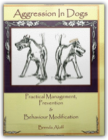
Canine Body Language: A Photographic Guide Interpreting the Native Language of the Domestic Dog
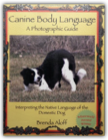
Cart and Wagon Exercises 1984

Draft Test Regulations 1994

Building Blocks for Performance
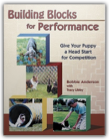
* Motivate your puppy to enjoy training * Build drive through goal oriented games * Tailor your interaction with your puppy to his future performance event. MYM: Meet Your Match

Search And Rescue Dogs: Training Methods

Advanced Schutzhund

"Ivan Balabanov is among the few top trainers in the country who truly understands dog behavior and drives. He is highly respected by the best Schutzhund competitors, trainers and coaches in the country." —Glenn Stephenson, United Schutzhund Clubs of America Judge, International competitor Training methods for the top competitor. Advanced Schutzhund takes a problem-solving approach to Level III work that will help competitors bring their dogs to the highest level. Tracking, obedience and protection are dealt with individually, analyzing specific problems that crop up in each skill and offering step-by-step solutions. The approach uses operant conditioning techniques that steer clear of compulsion methods and build a dog's confidence, courage and problem-solving ability. You'll also find tips on how to compete at the National and World levels, including traveling with your dog. A Howell Dog Book of Distinction Animal Play: Evolutionary, Comparative and Ecological Perspectives

Give Your Dog a Bone: The Practical Commonsense Way to Feed Dogs for a Long Healthy Life

Famous Kelpies 1870-1968

Dogs Bite: But Balloons and Slippers Are More Dangerous

Dog Locomotion and Gait Analysis
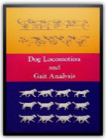
Playtraining Your Dog

Obedience training does not have to resemble Marine boot camp, with the dog as the recruit and the trainer as the drill instructor. Nor does it have to be work. Rather, as the title of this comprehensive guide suggests, it can be playful fun for both — with a few rules thrown in to shape the game itno an obedience exercise. Playtraining Your Dog provides an alternative to the violence that conventional training methods inflict on the minds and bodies of dogs. Using widely known, standardized exercises from the American Kennel Club, and written in a clear, informative style, this book contributes to realizing the full potential of both the dog and the dog/owner relationship. Topics covered include: - instructors & training classes - training time - motivation - advice for showing a dog - cues & body language Playtraining Your Dog is an essential addtion to every dog-owner's — and dog-lover's — library. Kinship and Behavior in Primates

Bones Would Rain from the Sky: Deepening Our Relationships with Dogs

BONES WOULD RAIN FROM THE SKY Akin to Monty Roberts's The Man Who Listens to Horses and going light-years beyond The Hidden Life of Dogs or any training manual, Suzanne Clothier takes a radical new direction in understanding our life with dogs...and our mutual love. Drawing on a lifetime of experience with dogs, this nationally renowned dog trainer brings us astonishing new lessons about our animals—and ourselves. Gently, with intelligence, humor, and unfailing patience, Suzanne Clothier guides us to truly comprehend another creature's mind and heart. You will discover how our dogs see the world from their uniquely canine perspective, how we can meet their deep need for leadership without using force or coercion, and how the "laws" of canine culture often put our dogs at odds with us and our very human world. Clothier's unparalleled insights into aggression in dogs can help prevent a tragedy, including the unnecessary destruction of a pet. In these pages, you will meet unforgettable dogs who will capture, and perhaps break, your heart. There is Badger—handsome, curious, and perhaps dangerous. Can his threatening behavior be changed? Though doomed by a congenital heart murmur, the winsome pup McKinley offers an unforgettable lesson in living. Then aging Vali brings us to the moment that all dog owners must someday face: the loss of a devoted companion. But what this old dog teaches us in her last days may change you forever. As in no other "dog book" or training manual, in BONES WOULD RAIN FROM THE SKY an extraordinary woman shows us how to find a deep connection with another being and to receive an incomparable gift: a profound, lifelong relationship with the dog you love. An Eye for a Dog: Illustrated Guide to Judging Purebred Dogs
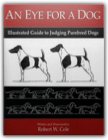
Devil Dog

Dogs: A Startling New Understanding of Canine Origin, Behavior & Evolution

Drawing on insight gleaned from forty-five years of raising, training, and studying the behaviors of dogs worldwide, Lorna and Raymond Coppinger explore the fascinating processes by which dog breeds have evolved into their unique shapes and behaviors. Concentrating on five types of dogs — modern household dogs, village dogs, livestock-guarding dogs, sled dogs, and herding dogs — the Coppingers, internationally recognized canine ethologists and consummate dog lovers, examine our canine companions from a unique biological viewpoint. Dogs clearly points the way for dog lovers, dog therapists, veterinarians, and all others who deal with dogs to understand their animals from a fresh perspective. How did the domestic dog become a distinct species from the wolf? Why do different breeds behave differently? Most important, how can we improve the relationship between humans and dogs? The authors show how dogs' different abilities depend upon the confluence of their nature and nurture — that both genetics and the environment play equally key roles. They also reveal that many people inadvertently harm their canine companions because they fail to understand dogs' biological needs and dispositions. Dogs is a highly readable biological approach by noted researchers that provides a wealth of new information about the interaction of nature and nurture, and demonstrates how unique dog behavior is in the animal world. Treasure

The Culture Clash: A Revolutionary New Way to Understanding the Relationship Between Humans and Domestic Dogs

Dogs are from Neptune

Nowhere else is the case made more strongly for positive reinforcement training for the resolution of serious problems, not simply from the standpoint of dog and handler-friendliness, but from that of efficacy and deep, permanent change. "Dogs Are From Neptune" draws from real cases to provide clear, step-by-step advice for troubleshooting problems from obedience proofing stumpers to serious biters and fighters. Many of the owners presenting histories had made the rounds of trainers and behaviorists with no improvement prior to submitting their cases. There is a comprehensive and enlightening discussion of the finer points of classical and operant conditioning and why the former may indeed "over-ride" the latter when dealing with aggression. Donaldson has treated innumerable aggressive dogs and has an excellent ability to tease out key features in each case history. Her description of "Suburban Dog Syndrome" rings true for dog people everywhere. Perhaps most ground-breaking are her discussions of dog bullying, fighting and defensive aggression. The first three sections cover aggression, towards strangers, family members and other dogs. The aggression to strangers section contains a case of "socialization omission," to men specifically; a more globally aggressive dog with many triggers, a dog on the comeback trail from a bad beginning in life, a therapy dog with a good history that begins growling at certain people and the case of an exasperated family who feel they have a genetic misfit. The aggression to family members section, entitled "Resource Guarding" gives step-by-step plans for and background on food and object possessiveness as well as a beautifully structured treatment protocol for a dog that will not allow routine handling. In the dog-aggression section, the topics are reactivity to proximity, chronic fighting in a dog park, a dog that begins growling after a couple of bad experiences at class, a how-to on handling a dog that bullies other dogs, understanding inter-bitch aggression, the owner's role in dog to dog aggression problems and an extremely convincing case for the use of food in the treatment of aggression. The second half of the book involves cases of behavior and obedience problems and anxiety-related disorders. Counter-surfing, dirt, stool and garbage eating, amusing and informative cases of barking, pushy play-biting in a full-grown dog, sofa-elimination and its likely motives and a mounting Labrador bitch round out the behavior problems section. The obedience problems range from new insights into garden variety presentations such as pulling on leash, heeling, jumping up and controlling dogs off leash to the more esoteric context-specific stay-breaking, obedience-ring sluggishness and the relative merits of electric shock and non-aversive approaches to undoing a squirrel hunter. The fear and anxiety section encompasses both mild and severe separation anxiety, anxiety about traffic in general and about getting into cars and a fascinating case of a dog with Addison's disease who must avoid all stress but whose handler would like to continue training in obedience. Fight!: A Practical Guide to the Treatment of Dog-dog Aggression

Includes descriptions of: Common types of aggression Assessing prognosis Remedial socialization On-leash manners training Proximity sensitivity Play style and skills Resource guarding Prevention Mine! A Practical Guide to Resource Guarding in Dogs

Finally, here s a comprehensive, step-by-step guide to help you recognize, evaluate and treat resource guarding in pet dogs. From the author of The Culture Clash, Fight, Dogs Are From Neptune and Oh Behave! this book may just save your sanity and your relationship with your pet pooch. The Australian Kelpie

Dog Behavior: Why Dogs Do What They Do

After You Get Your Puppy

4th Developmental Deadline: Socializing Your Puppy to People - Your Most Urgent Priority is to socialize your puppy to a wide variety of people, especially children, men, and strangers, before it is twelve weeks old. Well-socialized puppies grow up to be wonderful companions, whereas antisocial dogs are difficult, time-consuming, and potentially dangerous. As a rule of thumb, your puppy needs to meet at least one hundred people before it is three months old. Since your puppy is still too young to venture out to dog parks and sidewalks, you'll need to start inviting people to your home right away. 5th Developmental Deadline: Teaching Bite Inhibition - Your Most Important Priority is that your puppy learns to inhibit the force of its bites and develop a "soft mouth" before it is eighteen weeks old. Whenever a dog bites a person or fights with another dog, the single most important prognostic factor is the degree of bite inhibition and hence, the likelihood and seriousness of injury. Accidents happen. Someone may tread on the dog's paw, or a child may trip over the dog while it's gnawing a bone. A dog may snap and lunge at a person when hurt or frightened, but if the dog has well-established bite inhibition, it is unlikely the dog's teeth will puncture, or even touch the skin. 6th Developmental Deadline: Continuing Socialization in The World at Large - The Most Enjoyable Priority of dog ownership is to introduce your well-socialized puppy to the world at large. Your dog will only remain sociable and confident if it continues to meet and greet at least three unfamiliar people and three unfamiliar dogs every day. Meeting the same people and dogs over and over again is not sufficient. Your dog needs to practice meeting, greeting, and getting along with strangers, not simply getting along with old friends. Regular walks with your dog are as essential as they are enjoyable. Dogsteps: A New Look
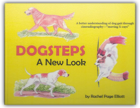
The Dog Listener: Learn How to Communicate with Your Dog for Willing Cooperation

This edition includes a new 30-Day Training Guide to further incorporate Jan's powerful method into every element of pet ownership, including: Understanding what it means to care for a dogChoosing the right dog for youIntroducing your dog to its new homeOvercoming separation anxietyWalking on a leashDealing with behavioral problemsGroomingAnd much more The Seven Ages of Your Dog: A Complete Guide to Understanding and Caring for Your Dog, from Puppyhood to Old Age
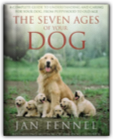
Secret Life of Dog Owners

Ruff Love: A Relationship Building Program for You and Your Dog

Tracking for Search and Rescue Dogs: A Practical Manual for Novice and Advanced Handlers
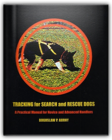
Animals Make Us Human: Creating the Best Life for Animals

Animals Make Us Human is the culmination of almost thirty years of research, experimentation, and experience. This is essential reading for anyone who’s ever owned, cared for, or simply cared about an animal. Dog Showing for Beginners

A Howell Dog Book of Distinction Successful Obedience Handling: The New Best Foot Forward

Another Piece of the Puzzle: Puppy Development
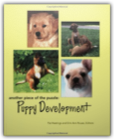
An Introduction to the Greater Swiss Mountain Dog

Skijor With Your Dog

Designed for easy reading, this practical guide to skijoring is a must for anyone interested in dogs, skiing, and winter fun. Inside of a Dog: What Dogs See, Smell, and Know

Inside of a Dog explains these things and much more. The answers can be surprising—once we set aside our natural inclination to anthropomorphize dogs. Inside of a Dog also contains up-to-the-minute research—on dogs’ detection of disease, the secrets of their tails, and their skill at reading our attention—that Horowitz puts into useful context. Although not a formal training guide, Inside of a Dog has practical application for dog lovers interested in understanding why their dogs do what they do. With a light touch and the weight of science behind her, Alexandra Horowitz examines the animal we think we know best but may actually understand the least. This book is as close as you can get to knowing about dogs without being a dog yourself. A Dog Year: Twelve Months, Four Dogs, and Me

In his popular and widely praised Running to the Mountain, Jon Katz wrote of the strength and support he found in the massive forms of his two yellow Labrador retrievers, Julius and Stanley. When the Labs were six and seven, a breeder who’d read his book contacted Katz to say she had a dog that was meant for him—a two-year-old border collie named Devon, well bred but high-strung and homeless. Katz already had a full canine complement—but, as he writes, “Change loves me. . . . It comes in all forms. . . . Sometimes, change comes on four legs.” Shortly thereafter he brought Devon home. A Dog Year shows how a man discovered much about himself through one dog (and then another), whose temperament seemed as different from his own as day from night. It is a story of trust and understanding, of life and death, of continuity and change. It is by turns insightful, hilarious, and deeply moving. Tracking : A Blueprint for Learning How

How to Train Police Bloodhound and Scent Discriminating Patrol Dog

Fatigue: Sleep Management During Disasters and Sustained Operations

The Versatile Border Collie
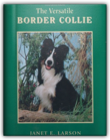
Handbook of Applied Dog Behavior and Training, Vol. 3: Procedures and Protocols

Handbook of Applied Dog Behavior and Training, Vol. 1: Adaptation and Learning

Handbook of Applied Dog Behavior and Training, Vol. 2: Etiology and Assessment of Behavior Problems

Man Meets Dog

Bernese and Other Mountain Dogs
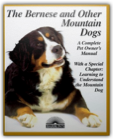
The Dog in Action: A Study of Anatomy and Locomotion As Applying to All Breeds

Food Pets Die for: Shocking Facts About Pet Food

Mindful Dog Teaching: Reflections on the Relationships We Share With Our Dogs

The Other End of the Leash

After all, although humans and dogs share a remarkable relationship that is unique in the animal world, we are still two entirely different species, each shaped by our individual evolutionary heritage. Quite simply, humans are primates and dogs are canids (like wolves, coyotes, and foxes). Since we each speak a different native tongue, a lot gets lost in the translation. The Other End of the Leash demonstrates how even the slightest changes in your voice and the way you stand can help your dog understand what you want. Once you start to think about your own behavior from the perspective of your dog, you’ll understand why much of what appears to be doggy-disobedience is simply a case of miscommunication. Inside you will learn • How to use your voice so that your dog is more likely to do what you ask. • Why “getting dominance” over your dog is a bad idea. • Why “rough and tumble primate play” can lead to trouble–and how to play with your dog in ways that are fun and keep him out of trouble. • How dogs and humans share personality types–and why most dogs want to live with benevolent leaders rather than “alphawannabees!” In her own insightful, compelling style, Patricia McConnell combines wonderful true stories about people and dogs with a new, accessible scientific perspective on how they should behave around each other. This is a book that strives to help you make the most of life with your dog, and to prevent problems that might arise in that most rewarding of relationships. For the Love of a Dog: Understanding Emotion in You and Your Best Friend

In For the Love of a Dog, McConnell suggests that one of the reasons we love dogs so much is that they express emotions in ways similar to humans. After all, who can communicate joy better than a puppy? But not all emotional expressions are obvious, and McConnell teaches both beginning dog owners and experienced dog lovers how to read the more subtle expressions hidden behind fuzzy faces and floppy ears. For those of us who deeply cherish our dogs but are sometimes baffled by their behavior, For the Love of a Dog will come as a revelation–a treasure trove of useful facts, informed speculation, and intriguing accounts of man’s best friend at his worst and at his very best. Readers will discover how fear, anger, and happiness underlie the lives of both people and dogs and, most important, how understanding emotion in both species can improve the relationship between them. Thus McConnell introduces us to the possibility of a richer, more rewarding relationship with our dogs. While we may never be absolutely certain what our dogs are feeling, with the help of this riveting book we can understand more than we ever thought possible. Those who consider their dogs part of the family will find For the Love of a Dog engaging, enlightening, and utterly engrossing. Play With Your Dog

All About Agility

Click to Calm: Healing the Aggressive Dog
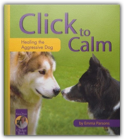
* desensitize your dog to approaching strange dogs * grab your dog's collar without getting bitten * teach dogs to perform canine calming signals on cue * use your own body language when under stress as a cue for your dog to remain calm Alex & Me: How a Scientist and a Parrot Discovered a Hidden World of Animal Intelligence—and Formed a Deep Bond in the Process

The Alex Studies: Cognitive and Communicative Abilities of Grey Parrots

Show Me!
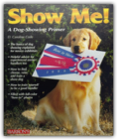
Feeling Outnumbered? How to Manage and Enjoy Your Multi-Dog Household.

Play Together, Stay Together - Happy and Healthy Play Between People and Dogs

How to be the Leader of the Pack...And have Your Dog Love You For It.

The Cautious Canine

Feisty Fido: Help for the Leash-Reactive Dog

Uncle Boris in the Yukon and Other Shaggy Dog Stories
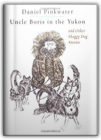
This is a book about a Jewish boy and his sled dogs — also a couple of wolves, a parrot or two...and Pinkwater's uncle...and his father. Daniel Pinkwater, prodigious author of books for children, popular commentator on National Public Radio, and dog trainer to the stars, is unclear about what dogs are thinking. In fact, he appears to be completely baffled by them. He considers himself lucky that his dog does not foul the carpet, bite people, or run in traffic. Unlike every other dog book ever written, this one does not make the reader feel more stupid than the author. Superpuppy: How to Choose, Raise, and Train the Best Possible Dog for You

How to Teach Your Dog to Play Frisbee

Don't Shoot the Dog!: The New Art of Teaching and Training

Karen Pryor's clear and entertaining explanation of behavioral training methods made Don't Shoot the Dog! a bestselling classic. Now this revised edition presents more of her insights into animal—and human—behavior. A groundbreaking behavioral scientist and dynamic animal trainer, Karen Pryor is a powerful proponent of the principles and practical uses of positive reinforcement in teaching new behaviors. Here are the secrets of changing behavior in pets, kids—even yourself—without yelling, threats, force, punishment, guilt trips...or shooting the dog: •The principles of the revolutionary "clicker training" method, which owes its phenomenal success to its immediacy of response—so there is no question what action you are rewarding •8 methods of ending undesirable habits—from furniture-clawing cats to sloppy roommates •The 10 laws of "shaping" behavior–for results without strain or pain through "affection training" •Tips for house-training the dog, improving your tennis game, or dealing with an impossible teen •Explorations of exciting new uses for reinforcement training Learn why pet owners rave, "This book changed our lives!" and how these pioneering techniques can work for you too. Lads Before the Wind : Diary of a Dolphin Trainer

Now, Karen tells us of her dolphin adventures after Sea Life Park. She went to sea on tuna boats, diving in the nets to study wild dolphin schools. She was the first to report on Brazil's remarkable human/dolphin fishing cooperative. She introduces us to Josephine, a wise old research dolphin who could use her training encounters not only to express opinions but also to make jokes. Finally, Karen explains how this kind of training is transforming the way we can communicate with any animal, even our own cats and dogs. This classic adventure story will delight anyone who loves animals and the sea. Lads Before the Wind is also the most readable book written on the new science of training and communicating with positive reinforcement. Canine SAR TECH Certification Standards 1999

Standards for SAR TECH III, II, I and Crewleader III 1998

Following Ghosts: Developing the Tracking Relationship

Not a how-to recipe book, Following Ghosts offers a revolutionary and challenging look at tracking, canine abilities and ways to help you and your dog reach your tracking goals. Whether you're a tracking novice or an experienced tracker, this booklet will change your thinking. Find out why tracking judges like Ted Hoesel (the first VST judge), Search & Rescue Units, police departments & others are not only recommending this book, but buying it for their students as "required reading!" On Talking Terms With Dogs : Calming Signals

Take the Lead

Paws & Effect: The Healing Power of Dogs

"So meaningful and straight to the heart, Paws & Effect sheds a whole new light on our communication with animals of which many people are unaware. You may listen more closely the next time your dog tries to tell you something!" - Betty White, actress, author Dogs have always helped humans and changed our lives for the better—by herding sheep, guarding our homes, and giving us unconditional love—but our dogs may save our lives as well. PAWS & EFFECT provides individual accounts of beloved pets that have supported their families, in miraculous ways, through periods of ill health; and it reviews the science that lends credence to claims of dogs' healing power. For the first time, the array of fascinating information on this topic has been gathered in one place. Did you know that groundbreaking research for detecting ovarian cancer with the use of a dog's nose has been aided by a grant from the Congressionally Directed Medical Research Program? Or that an Akita named Hotei is able to predict his owner's seizures, and gets her to lie down before they take place? That an organization called X-CPR promotes the use of small, hairless Mexican dogs to relieve the pain of arthritis and fibromyalgia? That Army Sgt. 1st Class Russell Joyce and his Special Forces, aided by Fluffy, his German Shepherd, worked with the Kurds, in Iraq, to face down looters and secure the city of Mosul? Author Sharon Sakson's investigation took her to academic institutions, veterinarians' offices, dog breeders, charitable organizations, and even the military—wherein she discovered documentation for what so many of us already understand: that the loving presence of a dog can avert, and transport us through, grave illness, whether physical or psychological. More importantly, her investigation took her deep into the hearts and lives of dogs and their owners. Sakson redefines the age-old bond between human and dog—a bond that is proving to be without limits. K9 Suspect Discrimination
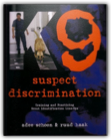
This book is a very professional description of the different ways in which scent identification line-ups can be used. The authors, Adee Schoon and Ruud Haak, have built upon sound research, to which the Canine Department of the Netherlands National Police Agency has contributed significantly. Puppy Primer
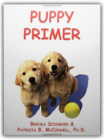
Some Swell Pup: Or Are You Sure You Want a Dog?

UC Davis Book of Dogs : The Complete Medical Reference Guide for Dogs and Puppies
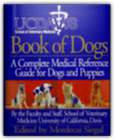
Alaskan Malamutes
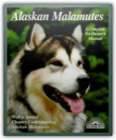
Raising Puppies & Kids Together: A Guide for Parents
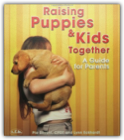
Maintaining a safe and happy household that includes both puppies and children can be a challenging task. What is the best way to teach a child to respect the family pet? What rules should be established to help avoid conflict? What are realistic expectations for both the puppy and the child? Sharing insight gleaned from over 20 years of combined experience in the field of dog training, the authors provide a roadmap for navigating the sometimes complicated path to a loving and respectful relationship between puppies and children. Real-life examples of interactions between children and dogs clearly illustrate common problems and offer appropriate solutions, while instructional photos give examples of both "right" and "wrong" behavior. Learn how to meld the playful and protective nature of a puppy with the curiosity and compulsiveness of a child to create a positive atmosphere for the puppy, the child, and the rest of the household. Dog Eat Dog: A Very Human Book About Dogs and Dog Shows

Survival Sense for Pilots and Passengers

Expert Obedience Training for Dogs

Scent and the Scenting Dog

The Hidden Life Of Dogs

The Social Lives of Dogs

No one writing today about dogs and people has Elizabeth Marshall Thomas's skills as a classically trained anthropologist and popularizer. What she has observed and analyzed will be illuminating to all of us who have wondered about our pets' behavior. Do dogs have different barks that mean different things? How does Snoopy recognize as family people he sees only once a year? And why does Misty bark at strangers she sees every day? What factors contribute to making a dog difficult to house-train? Why do certain dogs and cats get along so well? How do animals train each other? Thomas explores these questions by taking us into the mixed-species groups of her own household, particularly the lives of her remarkable dogs, with their differences in breeding, early training, and personality. Misty, a purebred, had been kept in a crate, alone, for most of her first year; lonely and insecure, she was afraid of grass and stairs, which she had never seen. Ruby was abandoned, having been pronounced untrainable. Pearl had lived with Thomas's son in his large household, and on her arrival at Thomas's house, she behaved like the well-mannered, self-possessed being she was. And Sundog, the most loyal, self-confident, courageous of all, accepted the arrival of each of these new dogs, but had made a group consisting of himself and Thomas's husband, so the others sorted themselves out without him. Each of these dogs, like any other, wanted more than anything to belong to a group, and how they organized themselves into felicitous relationships without any input from their owners is the most compelling of Elizabeth Thomas's many findings. Few dogs get to live with their chosen loved ones; they are slaves to our desires. We convince ourselves, however wrongly, that we know what's best for them. The Social Lives of Dogs presents marvelous evidence of the power of the group. And those of us fortunate enough to be given the trust of any honorable dog will have our lives enlarged. Right Dog For You

Here is a systematic and enjoyable way to choose a dog. This highly informative and useful book will take the guesswork out of choosing a dog while leaving in the fun. It will tell you about more than 110 breeds and help you to select a dog compatible with your personality, family, and lifestyle. Choosing a dog can become easy and enjoyable as you learn everything there is to know about the breeds, including: * physical characteristics — height, weight, strength, coat color and texture, tendency to shed, and food requirements * temperamental characteristics — indoor/outdoor activity level, emotional stability, sociability, training potential, and watchdog/guard-dog ability * popularity, background, and unique qualities of each breed This fully illustrated guide includes easy-to-read tables and pages of practical advice, plus a miniquestionnaire to help you narrow down your selection to the perfect match for you, your family, and your lifestyle. The Ultimate Puppy Toolkit: A Complete, Fun, Step-By-Step guide to raising a happy well-adjusted dog.
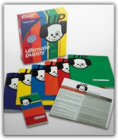
What All Good Dogs Should Know: The Sensible Way to Train

A Howell Dog Book of Distinction Positive Puppy Training Works

Getting a Grip on Aggression Cases: Practical Considerations for Dog Trainers

Help for Your Shy Dog: Turning Your Terrified Dog into a Terrific Pet

|


Amy Horton
Collection Total:
97 Items
97 Items
Last Updated:
Feb 20, 2011
Feb 20, 2011
 Made with Delicious Library
Made with Delicious Library